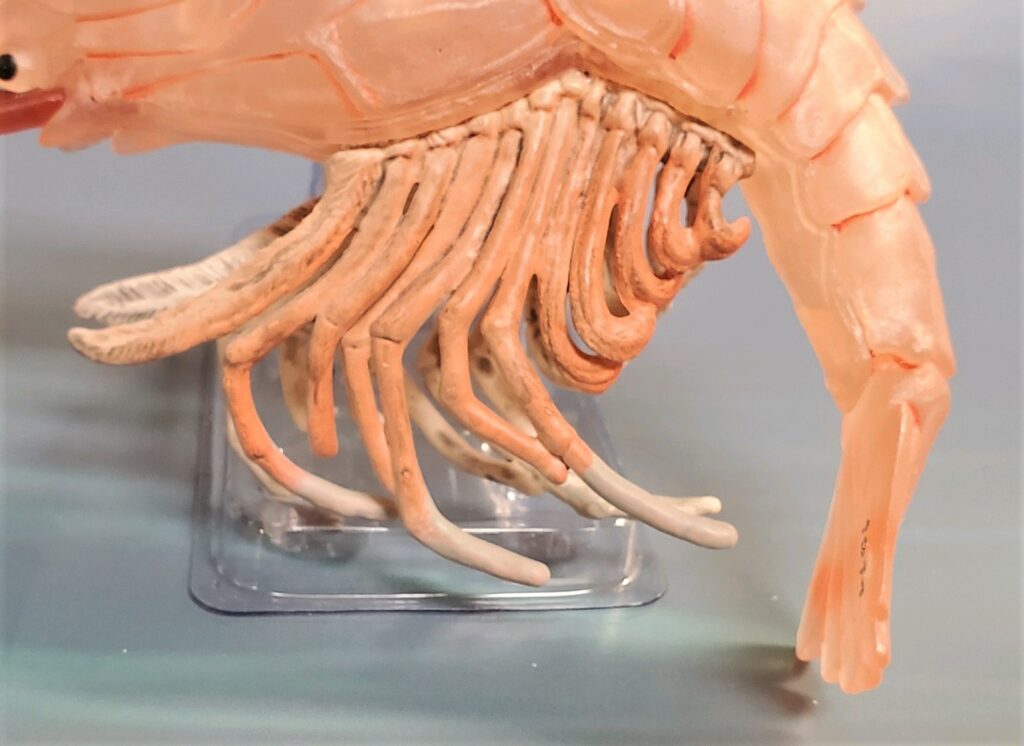Today we are looking at a review of, and for me a total reassessment of, the ‘shrimp’ produced by Safari Ltd. in 2015 as part of their Incredible Creatures line. When I first received this figure, I was very happy for it, since it was the first arthropod produced by Safari in five years (that wasn’t part of a TOOB or life cycle set), but also had some stark criticisms for it. After studying the figure more and doing more research into potential species, I am coming to appreciate it more and realize it is not as inaccurate as I originally thought.

First, about the identity. Looking at the morphology (including the rostrum) and color, the best two options are the pink shrimp (Farfantepenaeus duorarum) and the royal red shrimp (Pleoticus robustus). Both species are important commercial species in the Caribbean around Florida (where Safari Ltd. is based), but I have chosen the former, since the morphology is a little better for F. duorarum. Farfantepenaeus duorarum also occurs up the Eastern Seaboard to Massachusetts in the United States.

The figure is 10.5 cm across its longest points (from the tip of the rostrum to the tip of the tail). Measured along the midline, the body is 15.0 cm long, which makes it about 1:2 for a maximum-sized specimen of F. duorarum (would work for 1:1 for a smaller specimen). The bulk of the body is one piece, with each side of legs and each antenna attached to the main body. The main body is a translucent pink (very nice touch), which works for a live F. duorarum. The primary antennae are smooth (would have been nice if they were ringed, whether by paint or sculpt), but the smaller secondary antennae (antennules) are lacking, unfortunately.

The leg number looks correct. It is somewhat difficult to tell if there are 5 pairs of primary legs (pereopods) and 1 branched maxilliped, as there should be, or 6 legs, with a maxilliped attached to it. In other words, not sure if the first leg-like structure represents a pereopod and a maxilliped, or a branched maxilliped; if the latter, than the counts would be accurate (which I think it is).

The number of abdominal segments and pleopods is correct, but the tail fan is not correct. The decapod uropod is biramous, meaning there should be only two appendages on each side of the telson: one endopod and one exopod. However, in this figure, there are three. The exopod may be divided, but would still not appear as in this figure.

In the five-plus years since I have purchased this figure, I have come to respect it more with regards to its identity and morphology. Other than the lack of antennules and extra pair of appendages in the tail fan, it is a fairly realistic model for F. duorarum (if that is the species you choose for your collection). The figure didn’t last long and is already retired, so it might become a challenge to find (a quick search did not find in on eBay, nor is it currently on the Happy Hen Toys nor MiniZoo websites). But if you can find it, it will make a delicious addition to any collection!
Disclaimer: links to Ebay and Amazon on the AnimalToyBlog are affiliate links, so we make a small commission if you use them. Thanks for supporting us!




I didn’t even know this figure existed! Thanks for reviewing it for us.